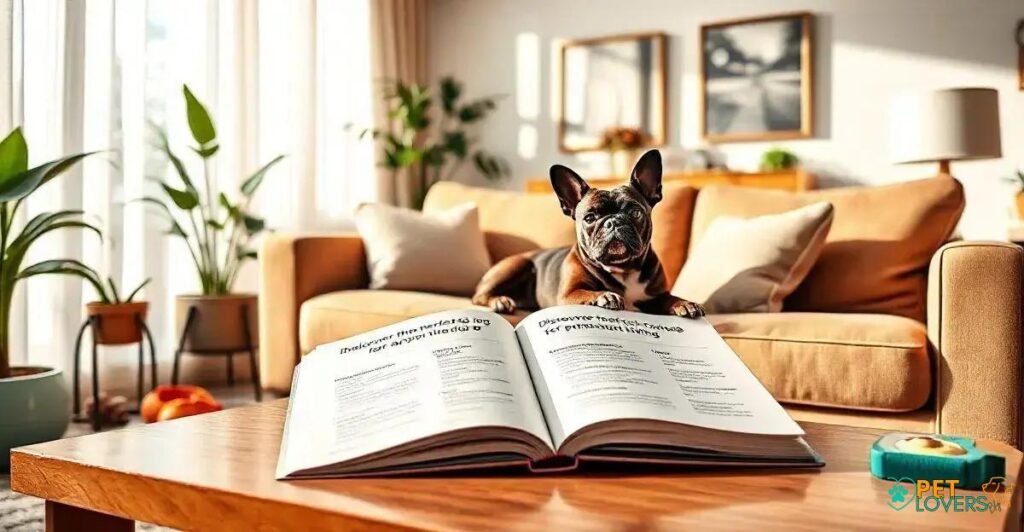When selecting a dog for apartment living, it’s essential to consider factors such as size, energy levels, noise levels, adaptability, grooming and exercise needs, and training requirements. By evaluating these aspects, you can choose a breed that fits your lifestyle, ensuring a harmonious living environment and a rewarding companionship.
Are you considering bringing a furry friend into your apartment, but wondering what dog breeds are best suited for the lifestyle? Look no further!
In this guide, we’ll explore the perfect dog for apartment living, taking into account factors such as size, energy levels, noise levels, grooming needs, and exercise requirements.
Choosing the Right Size
When choosing a dog breed for apartment living, size is a crucial consideration.
Small breeds, such as the Bichon Frise or the Maltese, are ideal for apartments due to their compact size and low-shedding coats.
Medium-sized breeds, like the Corgi or the Boston Terrier, can also thrive in apartments with regular exercise and training.
However, large breeds, such as the Labrador Retriever or the German Shepherd, may require more space and exercise, making them less suitable for apartment living.
Consider the size of your apartment and the lifestyle you lead when selecting a dog breed.
Energy Levels for Apartment Living
When it comes to energy levels, some dog breeds are more suited for apartment living than others.
Breeds like the Border Terrier, the Jack Russell Terrier, and the French Bulldog are known for their low energy levels and don’t require a lot of exercise.
They are perfect for apartment dwellers who don’t have a lot of time for extensive walks or runs.
On the other hand, high-energy breeds like the Australian Shepherd, the Border Collie, and the Dalmatian require a lot of physical and mental stimulation and may not be the best fit for apartment living.
It’s essential to consider your lifestyle and the energy level of the dog breed you’re interested in to ensure a happy and healthy living situation.
Noise Levels and Adaptability
When it comes to noise levels and adaptability, some dog breeds are better suited for apartment living than others.
Breeds like the Shih Tzu, the Poodle, and the Bichon Frise are known for their quiet nature and ability to adapt to new environments. They are perfect for apartment dwellers who value a peaceful living space.
On the other hand, breeds like the Beagle, the Fox Terrier, and the Yorkshire Terrier can be quite vocal and require more attention and training to adjust to apartment living.
It’s essential to research a dog breed’s noise level and adaptability to ensure it’s a good fit for your lifestyle.
Grooming and Exercise Needs
Grooming and exercise needs are essential factors to consider when selecting a dog breed for apartment living.
Some breeds, like the Poodle, the Bichon Frise, and the Maltese, require regular grooming to prevent matting and tangling of their fur.
They may also need daily walks and playtime to stay happy and healthy.
On the other hand, breeds like the Bulldog, the Pug, and the Shih Tzu are known for their low-maintenance grooming needs and can thrive with shorter, more infrequent walks.
It’s crucial to research a dog breed’s grooming and exercise needs to ensure you’re prepared to provide the necessary care and attention.
Training for Apartment Life
When it comes to training a dog for apartment life, consistency and patience are key.
Positive reinforcement techniques, such as clicker training and reward-based training, are effective methods for teaching a dog to obey commands and behave well in a small space.
It’s also essential to establish a routine and set clear boundaries to help your dog feel secure and reduce anxiety.
With the right training and socialization, a dog can thrive in an apartment setting and become a beloved companion.
Conclusion: Finding the Perfect Dog for Apartment Life
When it comes to finding the perfect dog for apartment life, there are several factors to consider, including size, energy levels, noise levels and adaptability, grooming and exercise needs, and training requirements.
By considering these factors and doing your research, you can find a dog breed that is well-suited to your lifestyle and living situation.
Remember to prioritize your dog’s needs and provide a happy and healthy living environment.
With the right dog by your side, you can enjoy a fulfilling and rewarding life in your apartment.
Frequently Asked Questions about Dogs for Apartment Living
What are the most important factors to consider when choosing a dog breed for apartment living?
When choosing a dog breed for apartment living, it’s essential to consider factors such as size, energy levels, noise levels and adaptability, grooming and exercise needs, and training requirements.
How do I ensure my dog gets enough exercise in a small space?
You can provide your dog with regular walks, playtime, and interactive toys to keep them engaged and active in a small space.
Can dogs with high energy levels thrive in an apartment?
While dogs with high energy levels may require more exercise and attention, they can still thrive in an apartment with regular exercise and mental stimulation.
How do I train my dog for apartment living?
Positive reinforcement techniques, such as clicker training and reward-based training, are effective methods for teaching a dog to obey commands and behave well in a small space.
Can I have a dog with allergies or health issues in an apartment?
It’s important to research and understand the needs of a dog breed before bringing them into your apartment, including any potential allergies or health issues.
How do I introduce my new dog to my apartment complex?
Introducing your new dog to your apartment complex should be done gradually, starting with short visits and increasing exposure to new sights, sounds, and smells.

